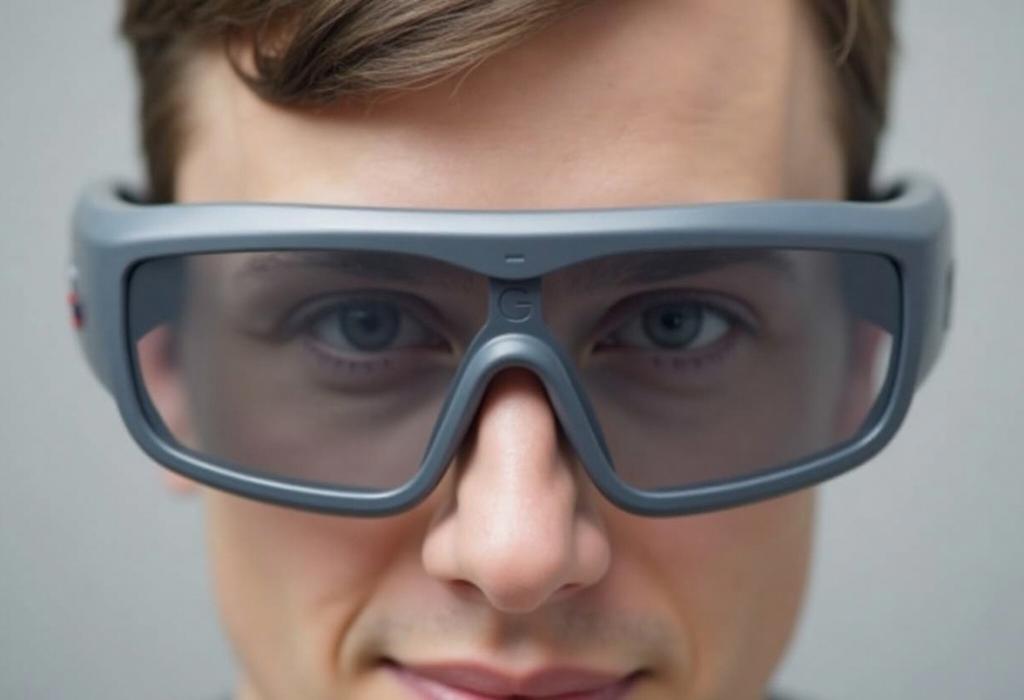In a recent TED2025 conference, Google showcased its latest prototype of Android XR Smart Glasses powered by its advanced Gemini AI, marking a significant leap from previous endeavors like Google Glass. The demonstration, led by Shahram Izadi and featured Nishtha Bhatia, offered a live look at how these smart glasses integrate a high resolution in-lens display, camera, microphones, and speakers into a sleek, everyday look that does not scream 'tech gadget'. This development is not occurring in isolation; Samsung is also in the mix as it collaborates on or develops complementary hardware based on the Android XR platform, highlighting the fierce competitive landscape in wearable smart glasses technology.
The demo delved into various real-world applications such as live translation, contextual information retrieval, and augmented navigational overlays. For instance, the glasses exhibited the ability to generate a haiku, recall information instantly from what the user glimpsed in the environment, and even translate text on the fly. This points to the pivotal role of Google’s Gemini AI, which appears to offer interactive capabilities that could transform the way users interact with both digital content and their immediate surroundings.
This announcement comes on the heels of previous demonstrations, including a December preview and earlier live demos at events like Google I/O 2024. However, this particular presentation at TED2025 is notable for its comprehensive live demonstration, which showcased the technology under conditions that are closer to how it might work in everyday usage. Google's approach emphasizes minimizing the bulk typical of earlier smart glasses, suggesting that miniaturization and design refinement are high priorities. The fact that the lenses support prescriptions indicates a thoughtful consideration of accessibility and user comfort.
In addition to these functional improvements, there is a clear strategic alignment with industry trends. With competitors like Meta preparing their own advanced smart glasses and Apple hinting at future projects, Google and Samsung's advancements underscore the rapidly evolving landscape of augmented reality wearables. The emphasis on integrating daily applications, from Google Maps’ immersive view to entertainment apps like YouTube Music, aims to ensure that these devices transition smoothly from niche tech curiosities to mainstream consumer products.
The information presented has been synthesized from multiple sources, including the dedicated coverage by The TOI Tech Desk and detailed breakdowns on tech news platforms like 9to5Google. The analysis also references commented comparisons with earlier products such as the original Google Glass and insights from analysts looking at the future production potential tied to smart glasses and related augmented reality devices. This collaborative sourcing from reputable technology outlets reflects a convergence of insights aimed at portraying the broader narrative of innovation, competition, and consumer convenience.
Personal commentary: It is refreshing to see the progressive trajectory of smart glasses, transitioning from clunky early models to what could soon be an indispensable daily tool. However, while the demos and prototypes look promising, the real test will be in consistent real-world performance and user experience. Challenges related to privacy, battery life, and seamless integration with the wider ecosystem remain to be addressed. That said, this push by tech giants suggests we may soon witness a revolution in how we interact with digital information, making smart glasses a likely staple in the near future.
The clear delineation of sources—from The TOI Tech Desk's extensive background in technology journalism, to the deep dives provided by 9to5Google and other tech critics—provides a comprehensive view of the current state of smart glasses. Such multi-sourced reporting ensures a well-rounded perspective, although the presentation tends to lean towards excitement over the innovation rather than a cautiously skeptical viewpoint, a bias often observed in tech news reporting when covering emerging technologies.
As we look forward to further demonstrations, such as potential hands-on experiences at upcoming events like Google I/O, it remains to be seen how these innovations will translate into market-ready products and whether they will truly dominate the wearable tech arena.
AD
AD
AD
AD
Bias Analysis
Bias Score:
20/100
Neutral
Biased
This news has been analyzed from 9 different sources.
Bias Assessment: The article leans slightly towards enthusiasm about the technology, based on live demonstrations and forward-looking predictions. However, it includes balanced commentary by noting potential challenges and the competitive landscape. The reliance on reputable sources such as The TOI Tech Desk and 9to5Google helps maintain overall accuracy, but the inherently promotional tone in tech showcases contributes to a low bias score.
Key Questions About This Article




